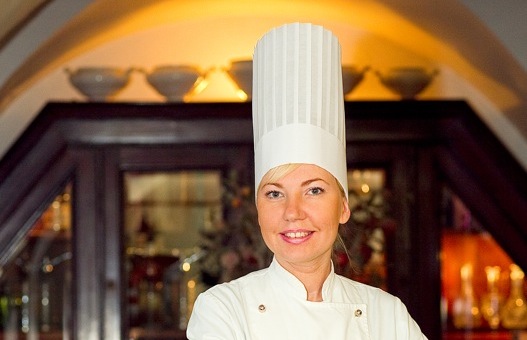This cooking competition was the first “live” competition, where the audience could see what was going on in the kitchen. Paul Bocuse came up with this concept, and the first Bocuse d'Or took place in Lyon in 1987. Since then it has grown into one of the most prestigious cooking competitions in the world.
Estonia has been competing since 2008. Heidy Pinnak last competed in 2009, where she came in 15th. This year the competition took place once again in Paul Bocuse's hometown of Lyon from January 29-30. Pinnak was the only female competitor of the 24 chefs from around the world. Pinnak gained her spot in the Bocuse d'Or final at the cooking semi-finals in Brussels this past spring, once again winning against top culinary countries like Italy, Spain, and Luxembourg.
 The competition lasts for five and a half hours, where Pinnak must complete a meat and fish platter. The chefs are required to use certain main ingredients in both the meat and fish platters. This year's ingredients were Irish beef tenderloin and sirloin, as well as halibut and lobster for the fish course.
The competition lasts for five and a half hours, where Pinnak must complete a meat and fish platter. The chefs are required to use certain main ingredients in both the meat and fish platters. This year's ingredients were Irish beef tenderloin and sirloin, as well as halibut and lobster for the fish course.
The inspiration for this year's platter came from the beloved Danish food film “Babette's Feast.” (if you haven't seen this film, I recommend you run to your video store and rent it right away!) Estonia's platter was a large oval, designed in cooperation with artists from the Estonian Academy of Arts, Department of Jewellery and Blacksmiths. The platter holds various sized pots and pans, representing the numerous pots and pans Babette used to prepare her famous feast. Garnished and sauces are left up to the chef to choose. Pinnak decided to use local Nordic ingredients. Local Estonian ingredients like Jõgeva yellow potatoes, Vana Tallinn liqueur, quail's eggs, native herbs, and rye bread were used. The meat was flavoured with juniper berries, and the fish was given a light smoky flavour from pine shoots.
“I want to the show the world that Estonia has great cooks and local ingredients to compete among the world's top cuisines. I hope that this will encourage young Estonian cooks to reach higher, and recognise the value of local Estonian ingredients and traditions, as they create their own new dishes,” said Pinnak, who has spent a very intensive year preparing for the competition. The months spent preparing have certainly paid off.




